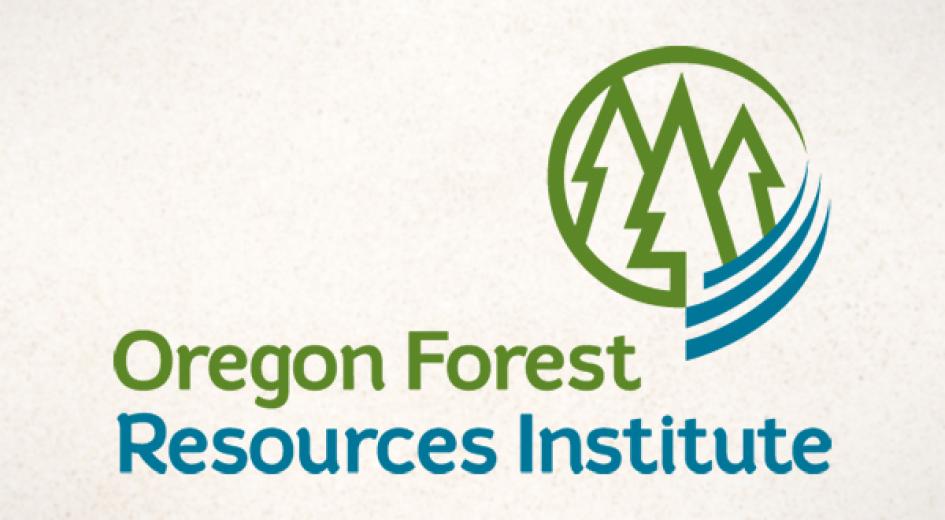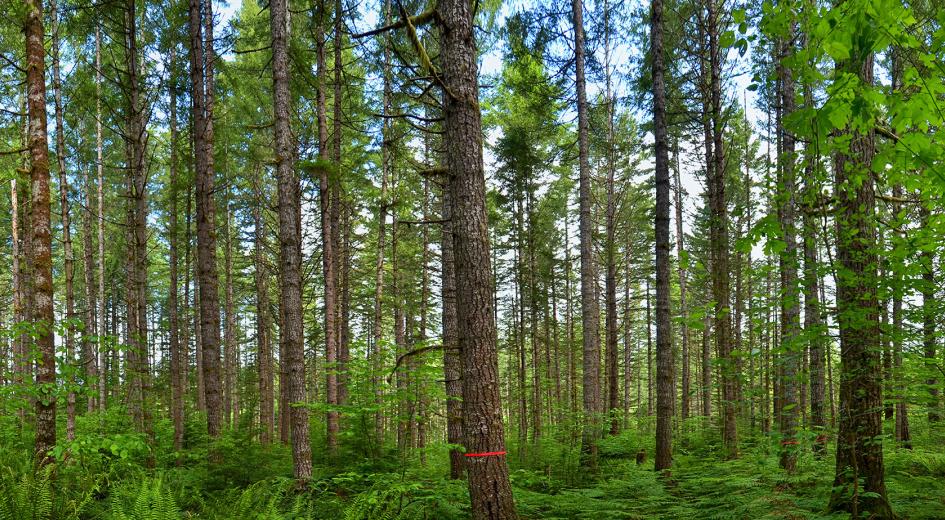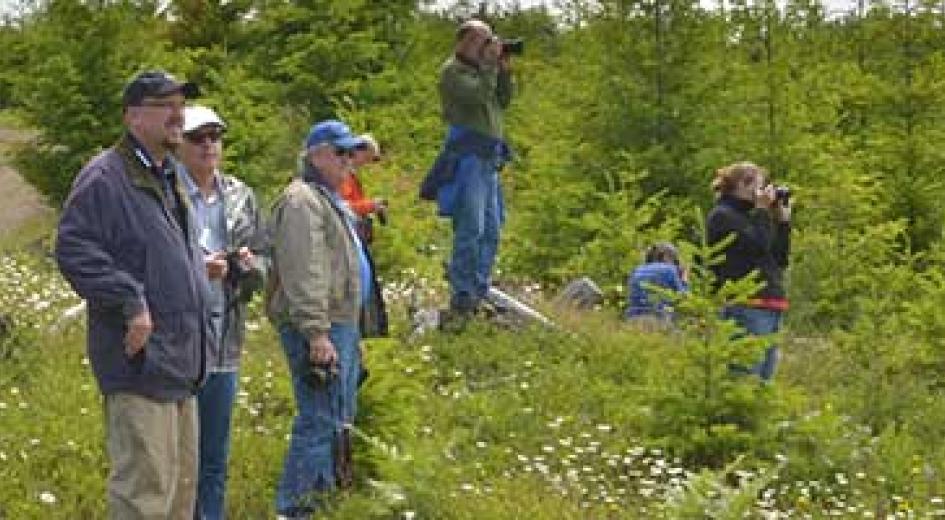Seeds of change: How Hampton Lumber is helping pollinators thrive
June 30, 2025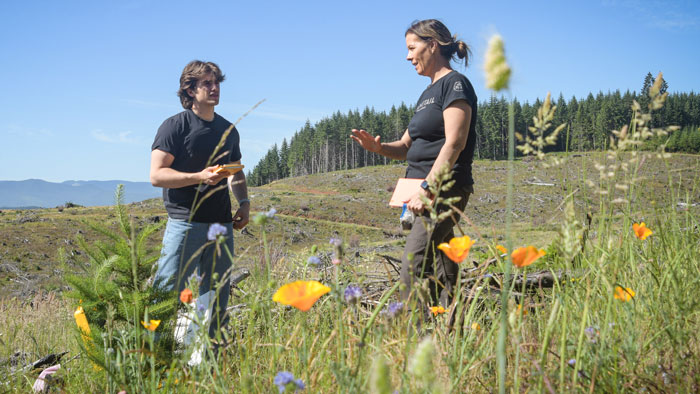
When you picture a recently harvested forest, bees and wildflowers might not be the first things that come to mind. But at Portland-based Hampton Lumber, a growing initiative is turning clearcuts into pollinator havens.
I visited one of their pollinator sites near Willamina, Oregon, this spring with Lindsay Davis, Hampton’s pollinator project coordinator for Oregon and southwest Washington. As we walked through the site — harvested in 2021, replanted in 2022 and now dotted with blooming wildflowers — I could see firsthand how post-harvest landscapes are being transformed into vibrant, living spaces for native species.
“When I took the job, I was just torn because I’m deathly afraid of bees,” Davis laughs. “I was like, ‘My job is to do what?’”
Despite her fear, Davis has become a driving force behind Hampton’s effort to support native pollinators. These efforts began in 2017 as a pilot program to explore how forestlands could be managed to benefit native bees. Today, Davis leads projects across the region, planting native wildflower seeds in the nutrient-rich soil where piles of logging debris, called “slash,” have been burned.
“These piles are like incubators,” she explains. “I come in the first two years and seed, and then let it replant itself.”
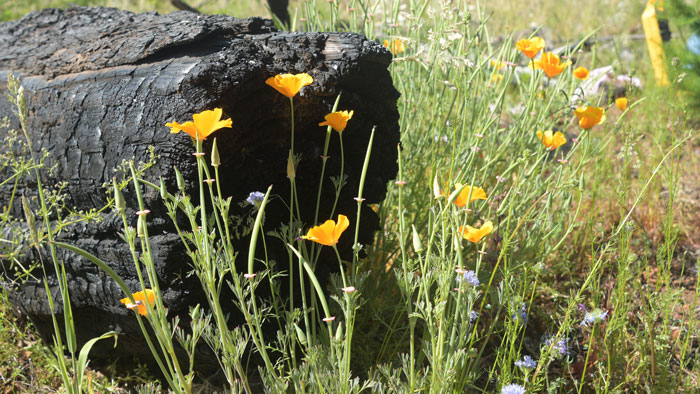
Rather than importing bees, Hampton’s approach is all about encouraging native pollinators to return on their own. “It was a ‘build it and they will come’ kind of thing,” Davis says. The key is timing. Areas that have been logged and replanted with tree seedlings are exposed to full sun for about 10 to 12 years before the forest canopy begins to close again. During that window, wildflowers and grasses thrive, and so do bees. Davis carefully plans projects in a mosaic pattern, spacing them out across the landscape to form corridors that allow pollinators to move naturally from one site to the next.
“They can travel about a quarter mile,” she says. “So, I use roads, buffers and waterways as pathways, seeding those too, so they can feed as they go.”
Hampton’s program is backed by partnerships with Oregon State University, the Oregon Department of Forestry (ODF) and the Oregon Bee Project. Over the years, research conducted on Hampton forestlands has helped identify effective, low-cost ways to support pollinator diversity on working timberlands.
Along with supporting research, Hampton’s pollinator program is inspiring others. Last year, the company hosted a tour with the Society of American Foresters to help professional foresters learn how to support native pollinators while managing timberlands. Hampton also helped ODF get started on their own pollinator project and has inspired other companies to start similar efforts on their lands, including Weyerhaeuser, Starker Forests Inc. and Manulife Investment Management.
While she’s quick to say she’s still learning, Davis has found joy in the simplicity of this work. Her favorite part? The bee counts.
“It’s fun to see them going from flower to flower,” she says. “You feel like you’re in a movie. I set a timer and count how many I see. It’s peaceful.”
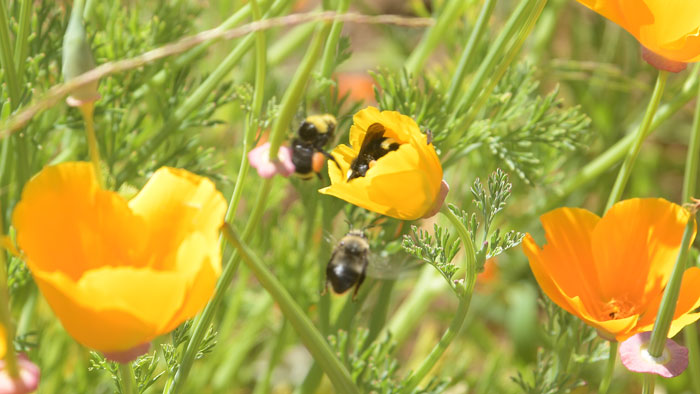
By returning to these sites year after year, and watching the landscape grow and change, Davis is closing the loop between harvest and renewal. What begins as a working forest operation becomes a flourishing pollinator habitat. Watching the pollinators return, she says, is proof that something small, like planting a few seeds, can make a lasting difference.
Henry Thomas
Social Media and Outreach Intern

